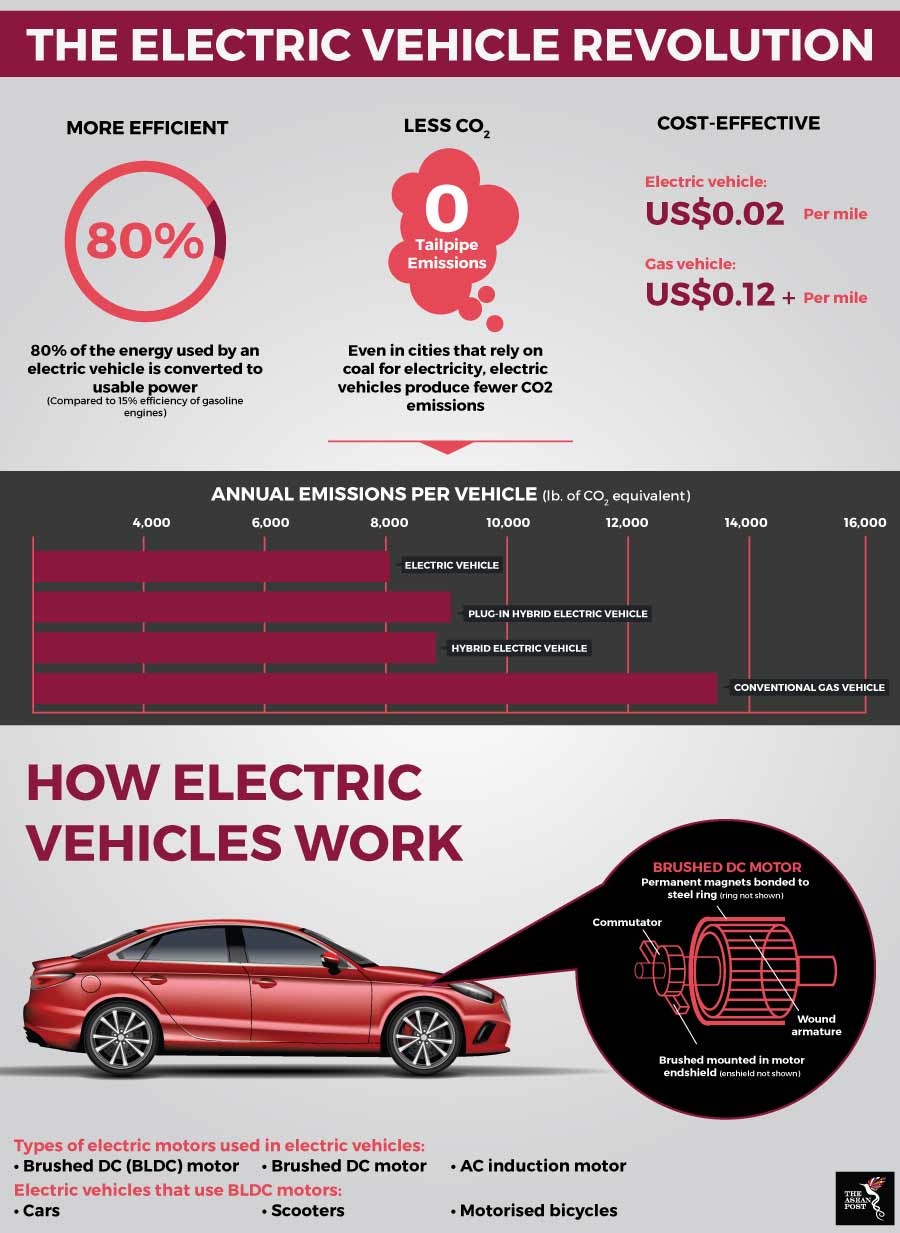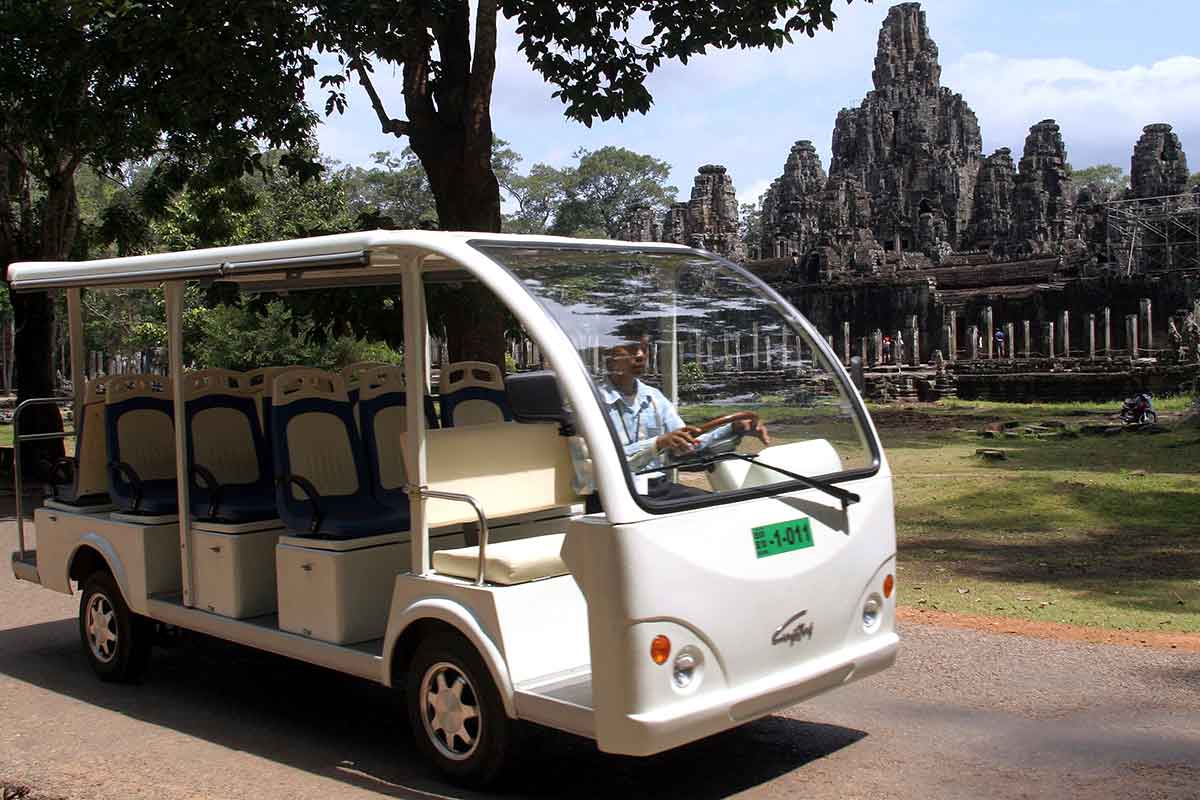Driving attitudes across the region has changed dramatically with the introduction of electric vehicles into the personal mobility market. As more and more consumers become environmentally conscious, the demand for electric vehicles has seen an uptick.
A report by Bloomberg New Energy Finance (BNEF) indicates that in 2040, 54 percent of cars sold will be of the electric variety, accounting for one third of the global car fleet. This is a revision from the previously predicted 35 percent. Electric vehicles are also seeing a huge jump in demand globally. In 2016, sales of electric vehicles worldwide doubled from the previous year, surpassing the two million units mark.
The Southeast Asian region, home to a population of 640 million should rightly be part of this technological upheaval. According to a report by the International Renewable Energy Association (IRENA) the region could have 59 million electric two- to three-wheelers and 8.9 million electric four-wheel vehicles by 2025. This translates to an estimated 20 percent of passenger automobiles on the road.
Reducing carbon footprint
The bustling city centres of Southeast Asia are known for – among other things – their horrendous traffic conditions. Plumes of smoke and smog from the exhaust pipes of vehicles, especially during peak traffic hours are a severe cause for concern for the environment in the long run.
Jakarta, the most populous city in Southeast Asia has one of the worst air qualities in the region thanks to gasoline and diesel run vehicles. A study by the Faculty of Public Health at the University of Indonesia found that 58 percent of all illnesses among people living in the city were related to air pollution.
With the demand for automobiles increasing, this situation could get worse. It is estimated that vehicle ownership across the region is expected to grow more than 40 percent by 2040.
Electric vehicles could however change all that. Such vehicles, including hybrid electric cars can drastically reduce carbon emissions released into the environment.
Compared to conventional cars that release unhealthy amounts of carbon dioxide, carbon monoxide and nitrogen oxide into the environment, battery-electric cars effectively produce zero-emissions from their tailpipes.

Source: Various
Going electric
According to a survey by Frost and Sullivan, there have been promising signs that electric vehicles are gaining popularity amongst road users in Southeast Asia, especially among young individuals below the age of 40.
A majority of those interested in purchasing electric vehicles come from Thailand, the Philippines and Indonesia.
To aid in the adoption of electric vehicles, governments in the region have also been enacting their respective policies and roadmaps.
Countries like Singapore and Thailand are well ahead of the curve in terms of electric vehicle development.
Singapore has been embarking on its electromobility journey since 2011 as a key strategy to mitigate carbon emissions from the transportation sector. In December 2017, the island republic launched its first electric vehicle sharing service with 80 cars and 30 charging stations.
To promote the use of electric vehicles, the Thai government drafted the ‘Electric Vehicle Promotion Plan for Thailand’ under its Thailand Alternative Energy Development Plan 2012-2021. As a result, Thailand went from having 60,000 hybrid passenger cars and 8,000 battery electric motorcycles that were registered in 2014 to a total of 102,308 hybrid cars and 1,394 battery electric vehicles.
Others like Indonesia, Vietnam and the Philippines are showing promise too.
Indonesia, set a national roadmap for the development of its automotive industry earlier this year and targets 2.1 million units of 2-wheeler electric vehicles like electric motorcycles and scooters and 2,200 units of 4-wheeler vehicles by 2025.
Vietnam’s first car manufacturer, Vinfast is also planning to release EV’s of its own. Vinfast announced that it will produce 250,000 electric scooters annually and is planning to release its own electric car in the coming years.
In the Philippines, the Electric Vehicle Association of the Philippines (EVAP) set a target in 2014 to have one million electric vehicles on Philippine roads by 2020. The association has also worked with the government to develop an Electric Vehicle Roadmap.
The Philippine Department of Energy (DOE) has also collaborated with the Asian Development Bank (ADB) to introduce electric tricycles (e-trikes) powered by lithium-ion battery technology. The initiative aims to reduce the transportation sector’s annual petroleum consumption by 2.8 percent and cut carbon dioxide emission estimated at 259,008 tons annually by shifting to 100,000 e-trikes.
With such rapid development and policy focus on electric mobility, electric vehicles could well be the future of transportation in the region. As investments and demand in this area grow, coupled with comprehensive government policies in place, we can possibly see planet-saving electric vehicles on our roads in the near future.
Related articles:
Making Southeast Asia energy efficient
Singapore’s mini driverless city has robot buses
